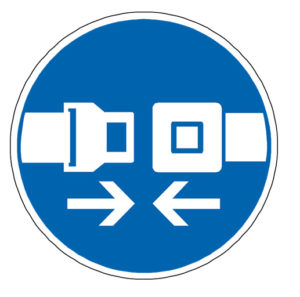 Most of us get into a vehicle every day. Automotive travel has become such an established part of our lives that we probably do not give much thought to our safety while onboard a vehicle of any kind. While safety should always be foremost on our minds as drivers and passengers, we have good reason not to be overly worried about getting into a vehicle. Through the years, automotive manufacturers have invested heavily in the development of innovative safety features, which have saved countless lives on the road.
Most of us get into a vehicle every day. Automotive travel has become such an established part of our lives that we probably do not give much thought to our safety while onboard a vehicle of any kind. While safety should always be foremost on our minds as drivers and passengers, we have good reason not to be overly worried about getting into a vehicle. Through the years, automotive manufacturers have invested heavily in the development of innovative safety features, which have saved countless lives on the road.
Here is a little history on three major car safety features for which we should all be very thankful:
Safety Belts – Safety belts were first introduced as standard by the Swedish automobile manufacturer, Saab, in 1958. Earlier, in 1946, California neurologist, Dr. C. Hunter Sheiden first conceived of the idea of seat belts. His concern arose greatly from the high number of head injuries he saw in emergency rooms. His research was published in a 1955 edition of the Journal of the American Medical Association (JAMA). He proposed not only the retractable seat belt, but many other automotive safety measures. By 1968, the U. S. Code, Chapter 301, Motor Vehicle Safety Standard required that all vehicles, with the exception of buses, have seat belts installed in all designated seating positions.
Airbags – American Industrial Engineer, John Hetrick was issued a United States patent in 1953 for the first of his airbag designs. His approach was to apply his experiences with compressed air from torpedoes during his service in the Navy to a device that would provide protection during automobile accidents. Although Hetrick worked with the major American automobile corporations at the time, the airbag concept’s first commercial use did not occur until 1971, when it was tested in a few Ford cars. By September 1, 1998, the Intermodal Surface Transportation Efficiency Act of 1991 went into effect, and required that all cars and light trucks sold in the United States have air bags on both sides of the front seat.
Safety Glass Windows
The concept of shatter-resistant glass was discovered inadvertently in 1903 by the French chemist Edouard Benedictus. When he dropped a glass flask filled with a dried collodion film, he observed that the glass coated with the film cracked, but retained its shape. A few decades later this laminated glass began to be installed in automobiles. In 1970, the U.S. government formed the National Highway Traffic Safety Administration (NHTSA). Since that time, four Federal Motor Vehicle Safety Standards (FMVSS) for automotive glass have been enacted, greatly improving driver and passenger safety during collisions.
Whether you are traveling near or far, I wish you safe travels and a very Happy Thanksgiving!
